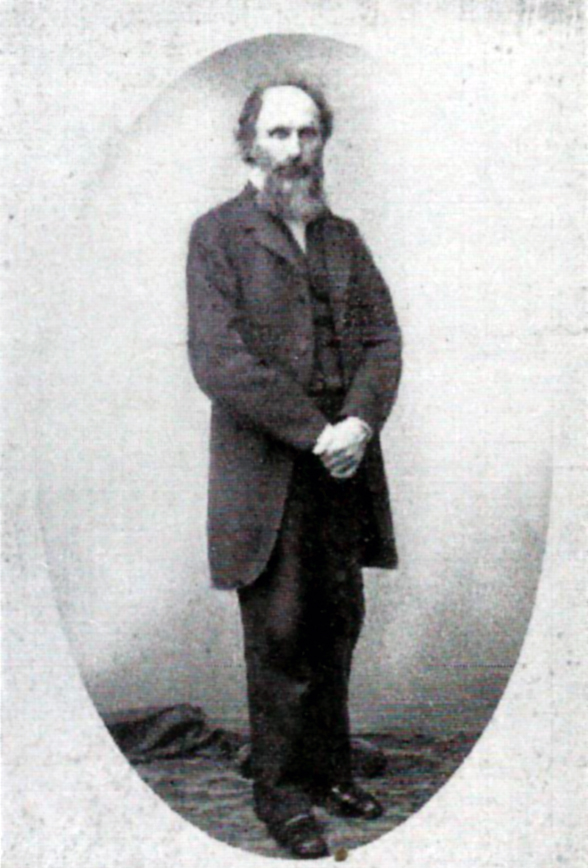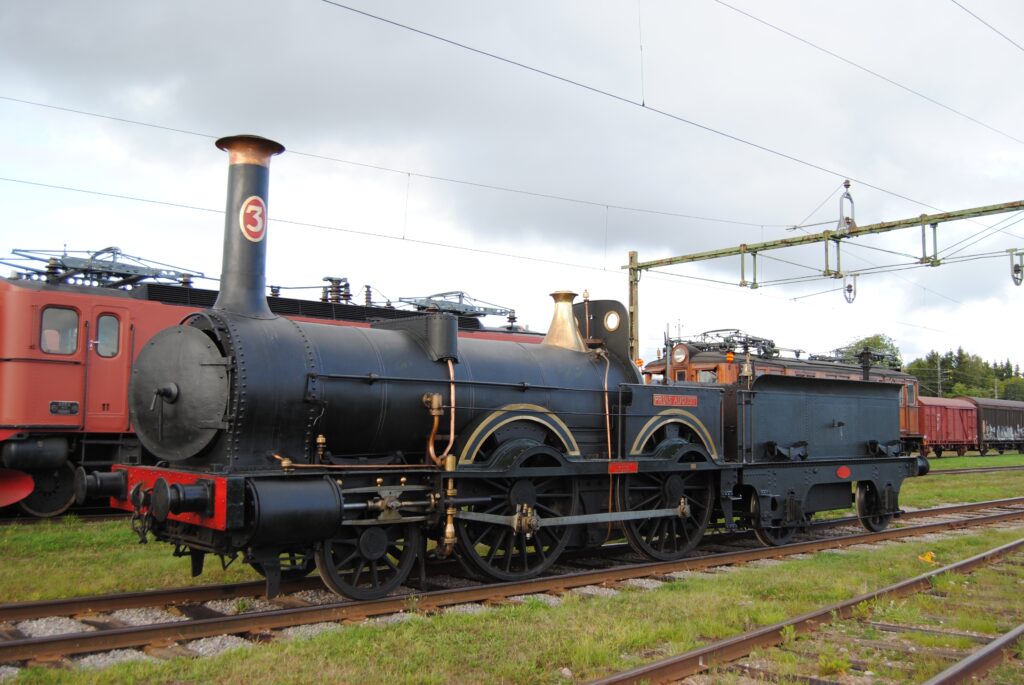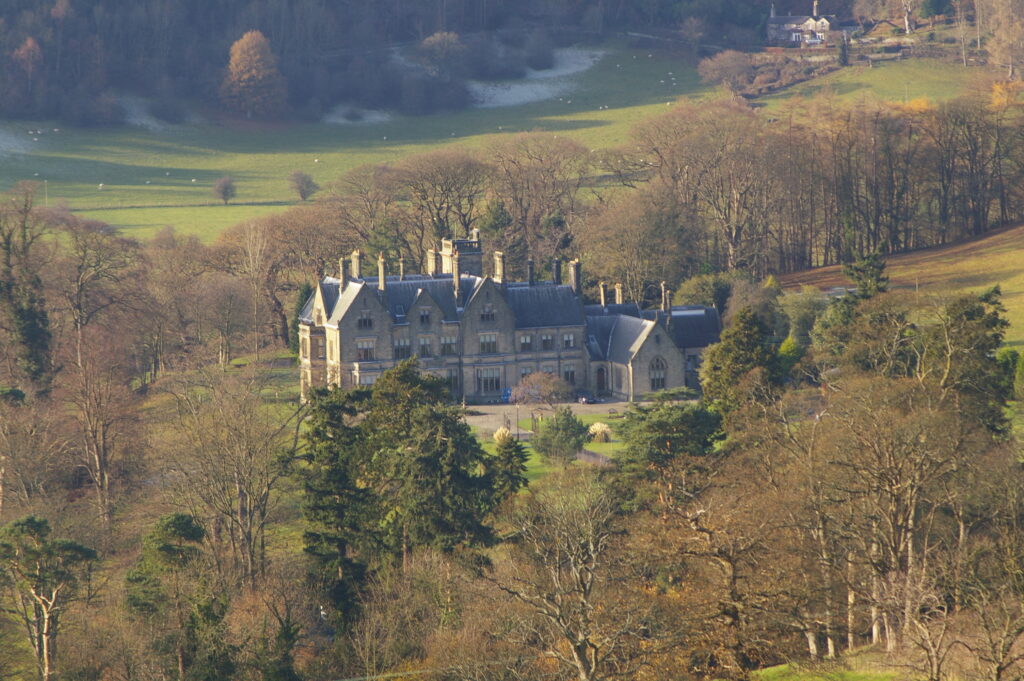Beyer, Peacock & Co. of Manchester was one of Britain’s greatest firms of locomotive builders. Their products can be found across Europe, Scandinavia, Egypt and one solitary example in the United States. Perhaps the most famous locomotives built by the Gorton firm were the Beyer-Garratts, examples of which can be found throughout Africa, India and Australasia. The global success of the firm for over 100 years was down to the excellence of its design in no small part thanks to a queer German immigrant, Charles Beyer.

Charles Beyer arrived in the UK as a penniless immigrant from Saxony, yet by the end of his life he was worth, in today’s terms, several millions. He had achieved all of this despite coming from a working-class background in Germany (his family had been hand-loom weavers), fighting prejudice against being a German and—perhaps lesser known—for being queer.
Born in Plauen in Saxony on 14 May 1813, he received a basic education before being apprenticed as a weaver. Charles—or as he was then Carl Friedrich—had a talent for drawing and would amuse himself by making model buildings and houses, apparently much to the delight of his mother who saw in the young Carl a means out of relative poverty with him becoming an architect.
Aged about 12, a local architect agreed to give him private tuition in drawing, mathematics, and geometry. One of the Beyer family’s prize possessions was a drawing made by Carl which the local doctor, Herr Von Seckendorff saw and much admired. Thanks to his generosity Carl was admitted to Dresden Polytechnic to study as an architect and engineer. On completion of his studies in 1834, he was awarded a large sum of money to visit Britain to report on the factory system and particularly the cotton spinning machinery. Thus, Carl made his first visit to Manchester where he met Richard Roberts of the firm of Sharp, Roberts & Co.: ‘the personality of Roberts imbued the ardent mind of young Beyer with a feeling akin to hero-worship.’
After a brief return home to Germany, Beyer returned to Manchester seeking work, applying to Sharp, Roberts & Co. Head of the firm, Mr Sharp turned down the young German—who had little English and even less money—and offered him a sovereign, but he declined to accept the gift saying: “It is work I want, not money.” This so impressed Richard Roberts that Beyer was taken on as a draughtsman at first designing cotton-spinning machinery and later being taken on by the locomotive department (sadly at a lower rate of pay than English employees). But, thanks to an awful lot of hard work, in less than 10 years he became chief designer.
Being at the top of his craft, Beyer looked at joining the prestigious Institute of Civil Engineers, but was most likely rebuffed for being German; he only joined the ICE after he had become a naturalised British Citizen in 1852. Beyer thus became the leading light of the professional body to represent mechanical engineers: the Institute of Mechanical Engineers.
The first meeting was held at his house in Manchester in October 1846. Beyer became Member No. 2 Although myth-making by the author Samuel Smiles would have us believe George Stephenson founded the Institute in 1847; George and Robert Stephenson were members 50 and 51 respectively, but George was invited to be President.
Among the first members of the IMechE were Richard Peacock, Heinrich Dübs (another German immigrant) and Charles Geach who, with Beyer, would go on to found the famous Manchester firm of Beyer, Peacock & Co. of Gorton, with Beyer serving as its Chief Engineer.
Beyer, Peacock & Co. would have several prominent German immigrants among its staff including Hermann Jaeger who was ‘Technical Assistant’ to Beyer and Chief Draughtsman. There was also Hermann Ludwig Lange—who was born in the same town as Beyer—who succeeded Jaeger as Chief Draughtsman, and following the death of Beyer became Chief Engineer and Joint Manager with Peacock. German names occur frequently in the Beyer Peacock staff register among the technical staff in the design and drawing office, working alongside Beyer.
It was as a partner of Beyer Peacock that Beyer—by now Charles Frederick Beyer—met someone to whom he referred as his ‘soul mate’, a Swedish engineer by the name of Gustav Theodor Stieler. Stieler was born on 8 August 1816. He studied at the Stockholm Technical Institute from 1831-1836, and then trained at an ironworks. He travelled to London in 1839 to work with fellow swede Jan Ericsson, who had entered Novelty into the Rainhill Trials of 1829 and would later design the famous warship USS Monitor. When Ericsson left for America, Stieler would work on several rail projects in Britain including designing part of Manchester Piccadilly Railway Station. After a brief spell working in France, Stieler returned to Sweden in 1855.
Beyer, Peacock & Co. built locomotives for a global market, and one of their earliest customers was Sweden. Stieler accepted a job working under Nils Ericsson (brother of Jan) on the first railway in Sweden, and he was tasked with acquiring suitable locomotives and carriages. Returning to Manchester he placed an order with Beyer, Peacock and met Charles Beyer. As Stieler’s biographer notes, he often had ‘man crushes’ on older or more dominant men—including Nils Ericsson and Richard Roberts—but the relationship between him and Beyer was different. The two were together in Spring 1855 at the first annual Beyer, Peacock works’ trip to Belle Vue Zoo and Gardens in Manchester.

The letters between them survive, and even in the guarded language of the time, are intimate. In the autumn of 1857 Stieler stayed with Beyer. In one intimate letter Beyer wrote to Stieler ‘I won’t allow you again to go into lodgings and make both of us miserable by having to part late at night.’ Despite Stieler’s career being full of promise in Sweden it was cut short, which as Robert Herpai of the Swedish Railway Museum (where Beyer and Stieler’s letters are preserved) argues was because he was queer.
Beyer was the antithesis of his business partner Richard Peacock: whereas Richard Peacock was a larger-than-life character who was a liberal politically and religiously, being a unitarian Beyer was ascetic. A staunch Anglican and conservative who had few close friends, he was very guarded and believed himself to be a terrible sinner. Like Peacock who built the lavish Brookfield Unitarian Church, Beyer built several Anglican Churches and in his will left an enormous sum of money to what is today the University of Manchester to develop education opportunities particularly for working-class students.
Furthermore, Peacock lived in the fairly modest Gorton Hall in the heart of his adopted community and took an active role in local politics and civic life spending his money liberally on schools, swimming baths, a penny savings bank for working people, public health measures and a mechanics’ institute. Beyer’s approach to his local community stood in contrast to Peacock: he moved to and completely rebuilt on a massive scale Llantysilio Hall in rural Wales living very much as lord of the manor and part of the squirearchy. The epitome of the Victorian ‘self-made man.’ And in death the two were opposites: Beyer’s grave is marked with a simple slab of marble, while Peacock is buried in a grand mausoleum as part of a dynastic family vault.

We will probably never know if Beyer was gay, or bisexual. He never married but was rumoured to have fallen in love with the daughter of Richard Roberts. Whether Beyer was happy, again we don’t know: he was a man who lived to work and whose work was his life. Beyer and Stieler had a strong, close, intimate relationship, and at a time when homosexuality was illegal in Britain it is no wonder that Beyer was so repressed and private.
Yet their relationship is worth celebrating as an example of a queer relationship, expressed through the language of its time, and 19th-century society. Beyer was a man who had to overcome xenophobia and repress his true self, working twice as hard as everyone else to prove he was good enough. Perhaps if he and Stieler had been born a century or more later, they may have been able to publicly express their true selves.
The post Hidden Stories of Engineering: The queer German immigrant who became one of Britain’s leading engineers appeared first on National Railway Museum blog.
